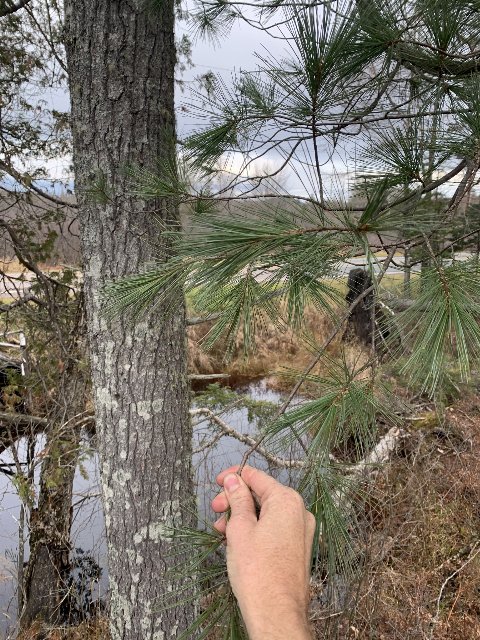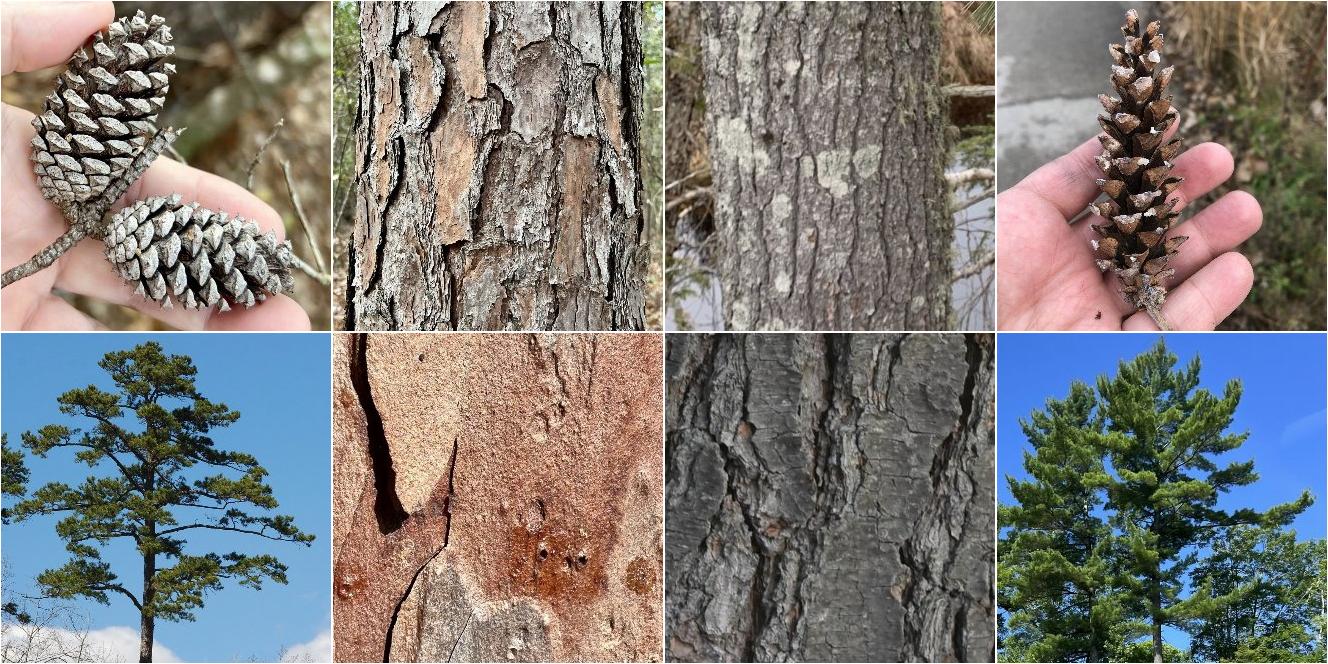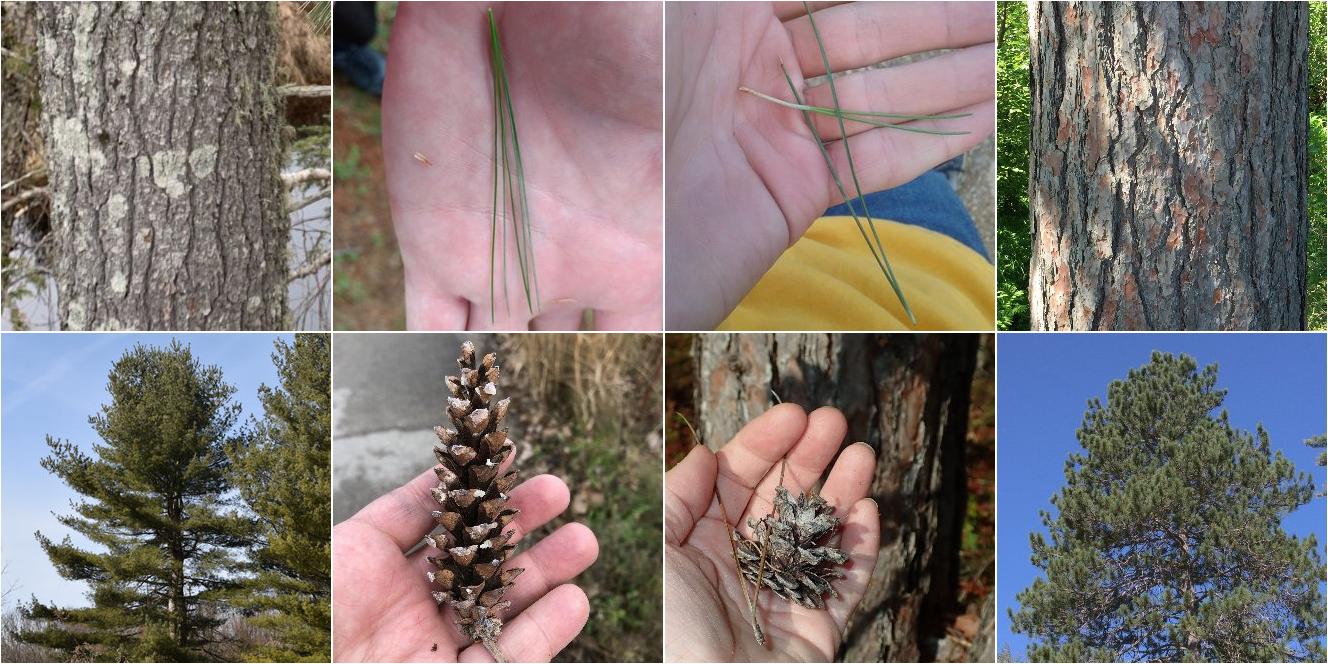Loblolly Pine (Pinus taeda) vs. Eastern White Pine (Pinus strobus)
Updated January 8th, 2023Both of these pines like richer, moister habitats than most pines. Although their range overlap is limited in the wild, both are widely planted in landscaping and forest plantations, and both have expanded their ranges near the area of overlap. They are easily distinguished by needles, bark, cones, and form. P. taeda ranges much farther south, requires more sun, is more tolerant of poor drainage, and is more likely in flat terrain. P. strobus is more shade-tolerant, more demanding of good drainage, and is more likely in sheltered ravines.






